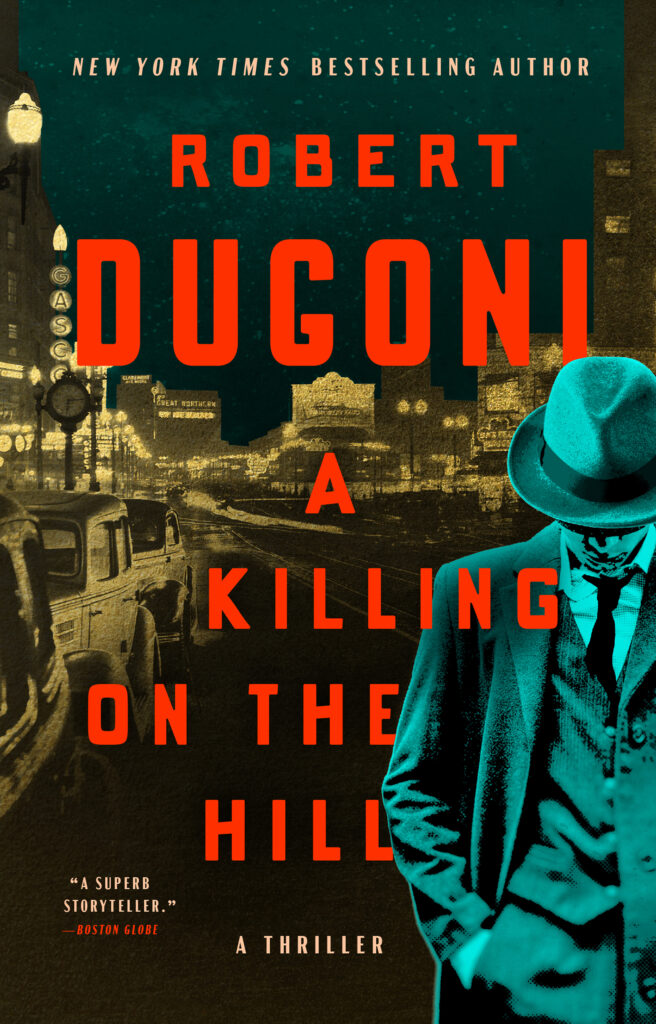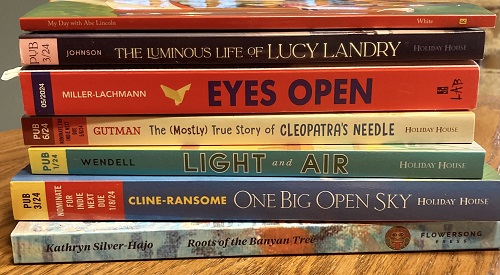Ray and Pat Browne Library for Popular Culture Studies: a Resource for Historical Novelists
B.J. SEDLOCK

Jerome Library, Bowling Green State University. Browne Popular Culture Library is on the 4th floor
I’m going to break my own rules in this article. Normally I write about university and cultural heritage institutions’ digitized collections that are available for free online, so that HNS member authors can use them to do research from home.
But sometimes a research collection that does not have a lot of digitized content is worth spending the time and money to travel to. Such is the case for Bowling Green State University’s Ray & Pat Browne Library for Popular Culture Studies, in Bowling Green, Ohio.
The BPCL, as they abbreviate it on their website, is “the most comprehensive archive of its kind in the United States. Our focus and mission is to acquire and preserve research materials on American Popular Culture (post 1876) for curricular and research use.” Ray Browne founded the Center for the Study of Popular Culture at BGSU in 1968, the first academic Popular Culture department in the U.S., and started the Popular Culture Library’s collection which would eventually be named for Browne and his wife.
I’ve known about the collection for a long time, but it only dawned on me recently, after attending a meeting in Bowling Green and having a “backstage” tour of the BPCL, what a good resource it would be for historical novelists. A disclaimer: the only personal interest I have in the BPCL is that Bowling Green State University’s library belongs to the same Ohio-based consortium as the library where I work.
Not much of the BPCL’s collection is digitized, due to copyright issues, director Nancy Down told me during my tour. And of course the collection is highly skewed to American popular culture. But the BPCL does welcome international scholars (as well as those from outside Ohio and independent scholars) coming to use its collections. In 2017, the library hosted a summer research institute, which attracted a scholar from Finland who was researching “transhumanist popular culture.” (https://www.bgsu.edu/news/2017/06/ray-browne-legacy-is-the-heart-of-popular-culture-research-institute.html)
Like many special collections in university libraries, BPCL’s paper-based collections cannot be browsed; you must use the catalog or online finding aids and request the particular item(s) you want, and the staff will retrieve it for you. It’s a good idea to go online ahead of your visit and make a list of the collections you want to use, and then request them before you arrive. Some materials are stored at a remote location and take a few days to retrieve.
Besides the usual weekday hours, BPCL is open on Sundays, and Monday and Tuesday evenings during the academic year; check the hours page before you actually visit. Also consult the “visiting scholars” page on the BGSU Library’s website for more information to help plan your visit.
What are some of the collection highlights HNS members would be interested in?
Historical romance authors may not know that the BPCL is the official repository of the Romance Writers of America’s papers. BPCL also maintains a collection of over 16,000 romance novels, one of the largest in the U.S. It would make researching the genre fairly easy, as so many relevant books are available in one place. Read more about the romance collections here.
Historical mystery writers will want to explore BPCL’s holdings in the field. The Library owns multiple mystery and detective-related manuscript collections. Researchers can see the manuscripts of Ruth Rendell, Patricia McGerr, and Bill Pronzini, and view Ellery Queen’s correspondence. View the finding aid list of these manuscripts here.

Godey’s Lady’s Book, August 1884. Credit:
Courtesy of Browne Popular Culture Library, Bowling Green State University
Godey’s Lady’s Book: BCPL has original issues of Godey’s Lady’s Book ranging from 1837 to 1860. This was an important and widely read American magazine for women, perhaps most noted for its colored fashion plates. A modern author writing about American women in the mid-19th century would do well to look at issues of this magazine to get a sense of what women’s lives were like during that era.
Children’s series fiction: BPCL has a large collection of series fiction aimed at young people, such as Horatio Alger, Tom Swift, American Boys series, Nancy Drew, and other adventure stories from the late 19th and early 20th centuries. BPCL’s staff told me that some researchers consult these books to get period language correct.

Advertising Trade Cards. Credit: Courtesy of Browne Popular Culture Library, Bowling Green State University
Advertising Trade Cards: BPCL offers an inventory of its collection of trade cards used between 1870 and the early 20th century, in categories such as coffee, dishware, flowers, shoes, and medicine. Anyone setting a novel in the last quarter of the 19th century would benefit from looking at trade cards from the period, to get an idea of consumer and business issues of the time. There is also a collection of over 14,000 greeting cards, which would provide context for 19th- and 20th-century American popular culture.
Fanzines: BPCL has many fanzines on different topics, including a large number related to Star Trek. They would provide insight into fan culture for a historical novelist. More information on the fanzine collection is available here.

Flapper’s Experience Magazine, April and May 1925. Credit: Courtesy of Browne Popular Culture Library, Bowling Green State University
Flapper’s Experience: BPCL’s Manuscripts and Outreach Archivist Stephen Ammidown describes this magazine as “a hilarious look at Flapper culture during the 1920s. It is difficult sometimes [to know] if the humor in Flapper’s Experience is meant to skewer Flappers or mainstream society.” An author setting a novel in the mid-1920s with a Flapper character will want to view the
issues BPCL owns from 1925 and 1926.
TV Guide: During my tour of the back room of the BPCL, I saw that they have a fairly complete collection of TV Guide magazine from 1955. A novelist setting a story in the last half of the 20th century who wants to make sure the TV programs his/her character watches are correct for the date, could check TV Guide for which program aired on which date.

Sears Catalog 1919. Credit: Courtesy of Browne Popular Culture Library, Bowling Green State University
Sears catalogs, 1903-1994: A valuable resource for a writer setting a novel in the 20th century is the collection of Sears catalogs. You could browse these merchandise catalogs to research clothing and consumer goods that your characters would wear or come in contact with during a particular period. BPCL also has catalogs from other mail-order companies, such as J.C. Penney (1971-2005).
Story Papers: BPCL owns a large collection of these illustrated tabloid periodicals which provided adventure, detective, and romance stories for young readers. Today’s authors researching the first half of the 20th century could learn about period language and what young people were interested in during the era. A list of BPCL’s story papers can be found in BPCL’s catalog.

Universal Cook Book With Bridge Instruction. Credit: Courtesy of Browne Popular Culture Library, Bowling Green State University
Universal Cookbook: BPCL’s Ammidown describes it as: “This 1930 cookbook is really three volumes in one — basic instructions to the housewife on every aspect of home management, an everyday cookbook, and a book on how to play the card game of bridge along with menus to serve your bridge-playing friends.” If your novel is set in the Depression era, this book would provide background for a middle-class female character’s home life. Bridge parties were very popular social events of the era before television, and hostesses would have agonized over what to serve at such a party.
Pulp Magazines: BPCL has an extensive collection of American pulp magazines, such as Argosy, Dime Detective, and Flynn’s Weekly. They provided adventure, detective, romance, and other escapist stories to late 19th- and early 20th-century readers. Read a few of these to appreciate the popular culture of the era, and get ideas of what your character might read. Unfortunately because of the acidic pulp paper that they are printed on, BPCL cannot scan or allow photocopies of these publications beyond the cover page, because doing that would cause damage to the fragile paper. Read more about the collection here.

Undated Cookbook. Credit: Courtesy of Browne Popular Culture Library, Bowling Green State University
Handwritten cookbook page: Ammidown said: “This undated cookbook is filled with recipes in many different hands where friends shared recipes. Such cookbooks are a fascinating look into the everyday lives of women during a time when women’s public voices were often silenced.”
Alternative and Underground Press Publications These publications provide primary source material for American radical and counterculture social history between 1950 and 1989. The page on the link I provided above offers a link to view these in full-text, but when I tried it, I was asked to enter a username and password, so the online versions are only available to BGSU students.
Little Blue Books “The Little Blue books were published by the Halderman-Julius Publishing Company of Giraud, Kansas from 1919-1978. The small staple-bound books were designed to fit into a working man’s pocket. Emanual Haldeman-Julius and his wife Marcet published them to foster ideals of American socialism and to provide basic education to the working classes.” (https://www.bgsu.edu/library/pcl/Collections.html) Some LBB topics that might be useful to historical novelists who are creating early 20th century working-class characters: how to dress, how to make money on Wall Street, home nursing, personal hygiene, and sexual issues.
Mad: BPCL has a nearly complete run of Mad, the influential humor/satire magazine, from 1955 to the present. Someone setting a novel in the ’50s or ’60s with a preteen character would get insight into what teens were reading, and topics that were “hot” in pop culture of the period, while browsing the issues of this title.
Another BGSU collection that I did not tour but may be useful to researchers when they visit Bowling Green is the Music Library and Bill Schurk Sound Archives. Its website states that the collection “represents the largest collection of popular music recordings in an academic library in North America. Our collections also include books, scores, and video formats covering music studies from multiple angles. Users from the campus, the community, and the world are welcome to use our materials on site. We have something for everyone!” It’s in the same Jerome Library building as the BPCL. A researcher planning to visit BPCL might also want to investigate the Music Library’s collections.
I would like to thank Nancy Down, Dana Nemeth, and Stephen Ammidown of BPCL for their help with this article.
About the contributor: B.J. Sedlock is Lead Librarian and Coordinator of Metadata and Archives at Defiance College in Defiance, Ohio. She writes book reviews and articles for The Historical Novels Review, and has contributed to The Sondheim Review.






